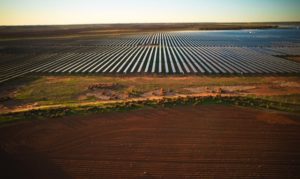The fact that global energy markets are changing shape – and fast – is fairly well accepted these days, even by Australia’s big incumbent gentailers. But suggestions that the arrival of affordable battery storage, on top of affordable renewables, could trigger a utility death spiral in Australia have largely been shrugged off by the local coal power industry.
But should they be so relaxed? Carbon Tracker has released a new report this week, Coal: Caught in the EU Utility Death Spiral, that analyses the performance of the EU’s five largest power generators – France’s EDF, GDF Suez, Italy’s Enel, and Germany’s E.ON and RWE – from 2008-2013, and attempts to answer the question of why these energy giants, who collectively represent nearly 60 per cent of Europe’s electricity generation, lost so much value in those five years.
According to the report, on a market capitalisation basis, these five power generators collectively lost over €100 billion (or 37 per cent of their value) from 2008 to 2013 while, in contrast, Germany’s stock market increased 18 per cent over the same period.
Here’s what this looks like in graph form:

According to Carbon Tracker, this is partly to do with the decoupling of electricity demand and GDP. From 2008 to 2013, EU electricity demand fell 3.3 per cent, while GDP grew 1 per cent, thus demonstrating that continued economic growth is not necessarily dependent on parallel growth in energy.
Here’s what that looks like:

Add the effect of demand falling to a decline in the proportion of that demand being met by fossil fuels, and you have a problem for established utilities – particularly those dependent on coal-fired generation.

“Utilities have been banking on business as usual which has led to oversupply and excess fossil fuel capacity,” says the report. “In the face of increased competition, EU coal-fired generation fell 4.2 per cent over the 2008-2013 period. However, some of the largest utilities have maintained significant coal capacity, led by RWE which still had more than half of its generation based on coal as of 2013.”
The result: “This report highlights the financial consequences of ignoring the transition to a low carbon economy. The false comfort of the status quo has cost the surveyed utilities dearly.
“There appear to be no signs of improvement for E.ON and RWE. In its 2014 annual report, E.ON wrote off €4,802 million in 2014 for unscheduled impairments on fixed assets. Similarly, in its 2014 annual report, RWE detailed unscheduled impairments of €600 million on power stations in the UK and Germany alone. The RWE Chief Executive Officer Peter Terium recently described German energy policy as an existential threat: “The so-called climate contribution for conventional power stations affects our very existence.”
Ultimately, the report comes to two conclusions: 1) New German coal plant economics don’t add up, and shareholders should challenge utilities that say otherwise; and 2) European utilities need a new business model/structure to reflect the changing market conditions.










